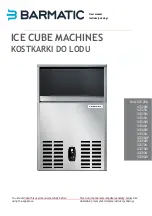
Table A
n. 0
n. 1
n. 2
n. 3
n. 4
n. 5
n. 6
n. 7
n. 8
n. 9
~ 4,8 mm
~ 3,8 mm
~ 3,3 mm
~ 2,5 mm
~ 1,9 mm
~ 1,5 mm
~ 1,2 mm
~ 1,0 mm
~ 0,8 mm
~ 0,6 mm
ADJUSTMENT
KNOB
PASTA SHEET
THICKNESS
V
Pass a piece of dough through the rollers (figure T) and repeat this operation 5-6 times folding the
resulting dough sheet in two and lightly flouring the center each time it is passed (figure U).
Pass each dough sheet through the fettuccine cutters (figure W).
If the cutters do not cut the dough properly, it means the dough is too soft so add some flour and pass it through the
rollers again (figure X). On the contrary, if the dough sheet is too dry add some water and pass the sheets through
the rollers again.
Hang long pasta on the Tacapasta (figure Y) using the
multipurpose wand provided.
This type of pasta can be stored in a cool and dry
place for 1-2 weeks once it has dried completely on the
Tacapasta for 2-3 hours. Also, you can cook this type of
pasta as soon as it comes out of the machine.
Bring a large pot of salted water to boil (~4 litres per
each pound of pasta). Cook pasta for about 2-5 minutes
and drain.
When the pasta sheet has taken a regular shape,
pass it through the rollers once (figure V) with
the regulating knob set on #1, then again on #2
continuing one number at a time, until you reach
the desired thickness (see Table A on the next
page).
With a knife or the wand of Tacapasta cut across
the dough sheet to make 25 cm ( ~ 10” ) pieces.
5 - HOW TO MAKE A PASTA SHEET
6 - HOW TO MAKE FETTUCCINE
T
U
W
X
Y
32
33
1 lb = 450 grams
1 oz = 28 grams
1 pt = 0,6 litre
1 qt = 1,1 litre
Table A
n. 0
n. 1
n. 2
n. 3
n. 4
n. 5
n. 6
n. 7
n. 8
n. 9
~ 4,8 mm
~ 3,8 mm
~ 3,3 mm
~ 2,5 mm
~ 1,9 mm
~ 1,5 mm
~ 1,2 mm
~ 1,0 mm
~ 0,8 mm
~ 0,6 mm
ADJUSTMENT
KNOB
PASTA SHEET
THICKNESS













































